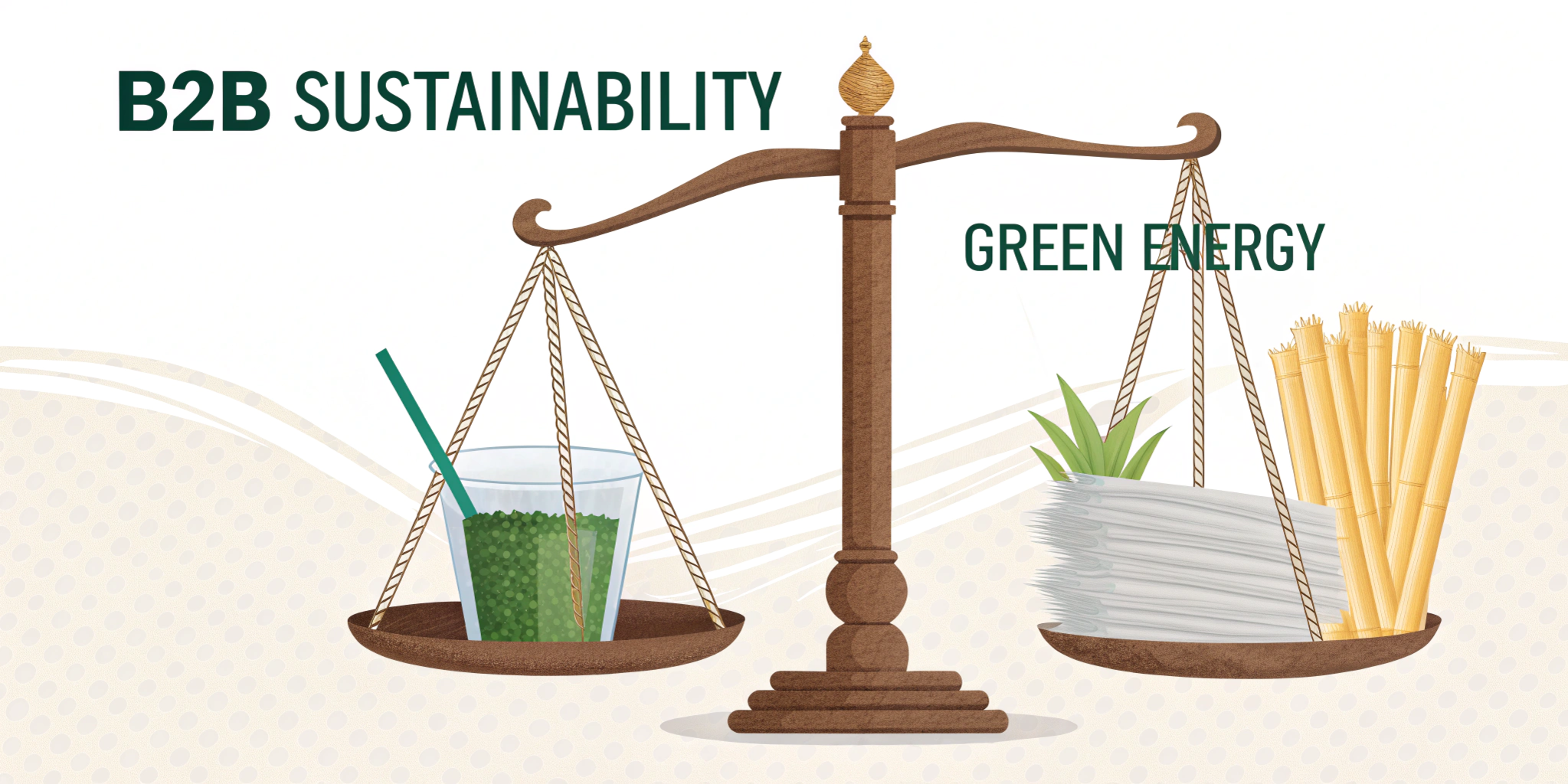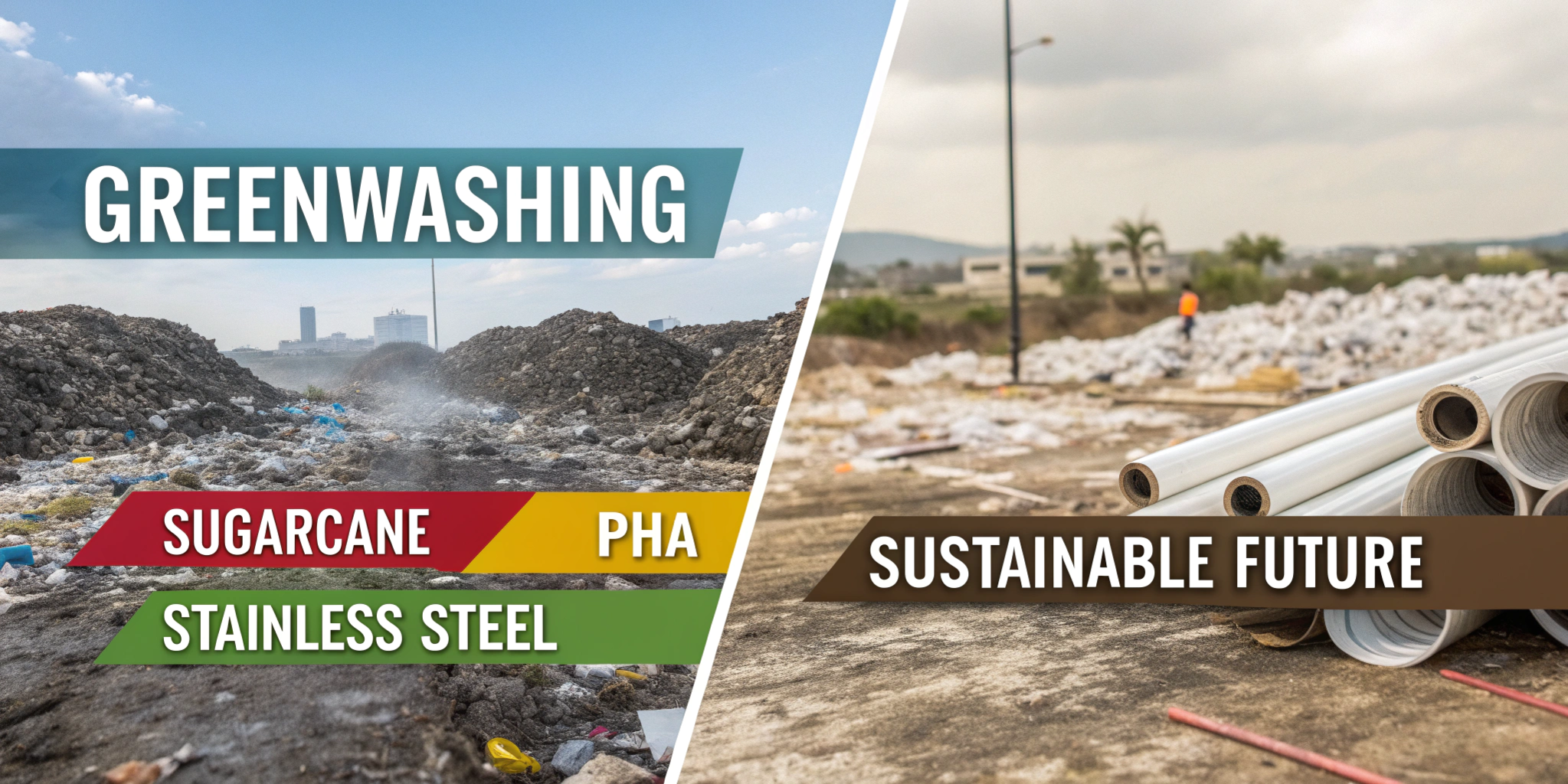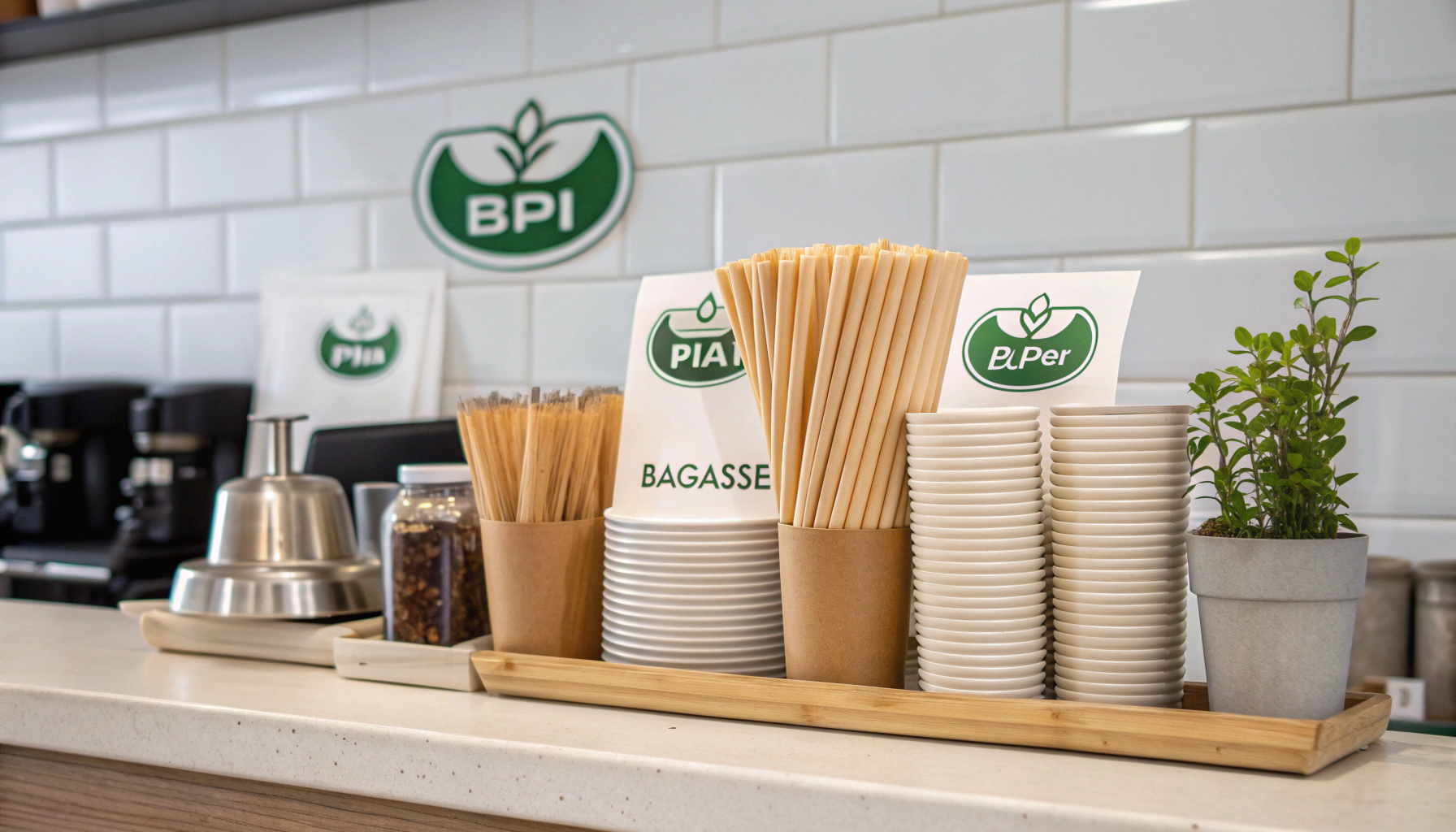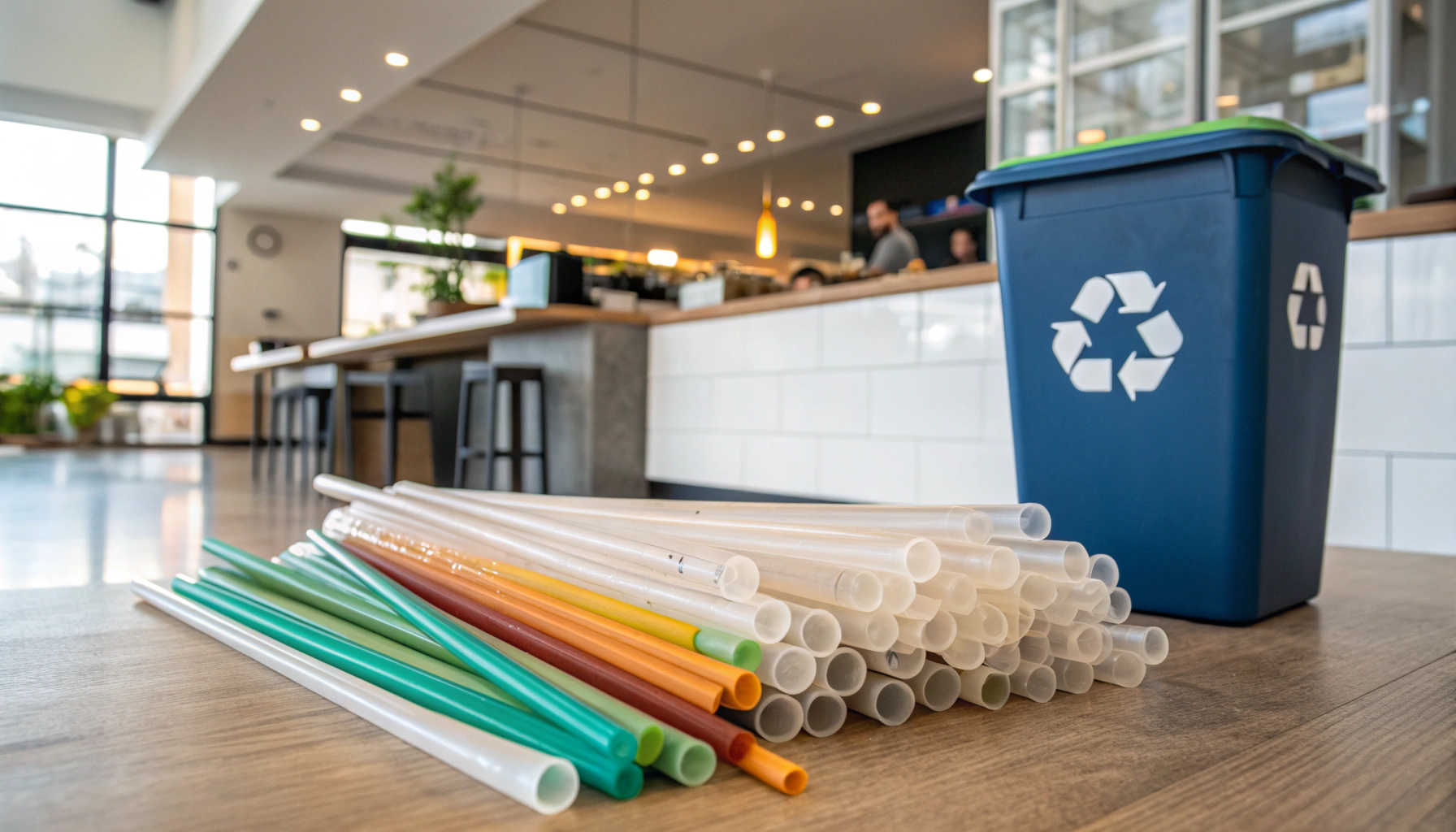
A critical guide for procurement managers, operations directors, and sustainability officers in hospitality & foodservice.
The modern supply chain operates under unprecedented scrutiny, particularly concerning the chemicals embedded within everyday products. Among the most pressing environmental and public health challenges today are Per- and Polyfluoroalkyl Substances (PFAS), often dubbed “forever chemicals” due to their extraordinary persistence. These synthetic compounds, renowned for their water and grease-resistant properties, have become ubiquitous, finding their way into everything from industrial coatings to consumer packaging.
Historically, PFAS were seen as a functional necessity for certain packaging applications. However, escalating research now challenges previous assumptions about their presence across various materials, including the seemingly innocuous drinking straw. For procurement managers, operations directors, sustainability officers, and supply chain executives, understanding this evolving landscape is no longer optional—it’s a critical imperative to mitigate risk, ensure compliance, and safeguard brand integrity in a rapidly changing regulatory environment. The operational and commercial impacts of ignoring the PFAS question in your supply chain can range from significant regulatory fines and product recalls to severe reputational damage and erosion of consumer trust.
Understanding PFAS in your supply chain is crucial for mitigating risks and safeguarding brand integrity.
Unpacking the Data: Are PFAS in Plastic Straws?
For years, the discourse around plastic straws primarily revolved around their environmental impact as single-use plastics. However, a deeper, more insidious concern has emerged: the potential presence of PFAS. The answer, based on recent scientific inquiry, is nuanced but clear: yes, PFAS have been detected in plastic straws.
A pivotal 2023 study by researchers at the University of Antwerp in Belgium, published in the peer-reviewed journalFood Additives and Contaminants, rigorously examined a variety of straw types. This research found quantifiable PFAS concentrations in three out of four plastic straw brands tested, with levels reaching up to 0.924 nanograms per gram (ng/g). This finding starkly contrasts with an earlier 2021 University of Florida study published inChemosphere, which reported no measurable PFAS in the plastic straws it analyzed.
These discrepancies underscore the complexity of PFAS detection, which can arise from several factors. While some plastic straws may intentionally incorporate PFAS for specific properties, the presence of these chemicals can also stem from manufacturing impurities, accidental contamination within the supply chain, or the use of recycled materials that inadvertently carry PFAS residues. For decision-makers, this means that even materials historically perceived as “safer” from a chemical standpoint now warrant closer scrutiny and validated testing protocols.
Recent studies confirm PFAS presence in plastic straws, highlighting the need for rigorous scrutiny.
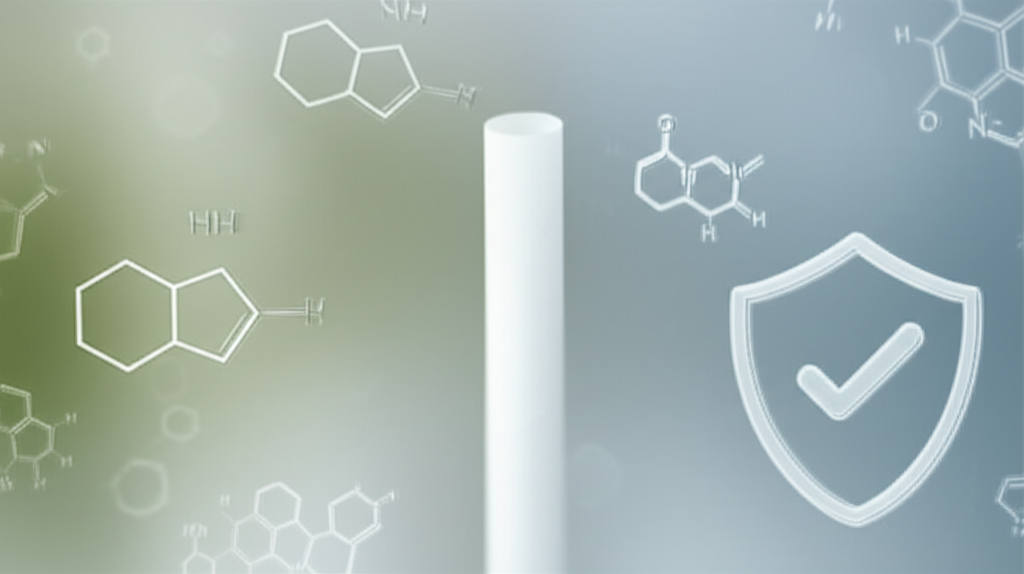
Beyond Plastic: PFAS Prevalence in “Eco-Friendly” Straw Alternatives
The move away from traditional plastic has led many businesses to embrace “eco-friendly” alternatives, often assuming they are inherently safer and more sustainable. However, recent studies present a surprising and concerning reality regarding PFAS prevalence in these alternatives. The same 2023 Belgian study that found PFAS in plastic straws revealed an even higher frequency in perceived sustainable options: a staggering 90% of paper straws and 80% of bamboo straws contained detectable levels of PFAS.
This widespread presence in plant-based alternatives is often attributed to the intentional application of water-repellent coatings during manufacturing, designed to prevent these materials from degrading too quickly when wet. Furthermore, contamination can occur inadvertently through the use of recycled materials that were previously exposed to PFAS, or through processing water used in the manufacturing pipeline.
The detection of these “forever chemicals” in products marketed as biodegradable raises critical questions about their true environmental claims. PFAS do not break down in natural environments, enduring for hundreds or even thousands of years. This persistence means that even if a paper or bamboo straw technically biodegrades, the PFAS it contains will remain, potentially leaching into soil and water systems, thereby undermining the very sustainability goals these alternatives aim to achieve. This revelation necessitates a fundamental re-evaluation of current sourcing strategies and a deeper dive into the chemical composition of all packaging materials.
“Eco-friendly” straw alternatives often contain PFAS, challenging their true sustainability claims.
The Critical Imperative: Health & Environmental Risks of PFAS Exposure for Businesses
The accumulation of PFAS in the environment and human body represents a global crisis with severe implications for public health and, consequently, for businesses. These “forever chemicals” are not merely transient pollutants; they are bioaccumulative, meaning they build up in living organisms over time, posing long-term health risks even at low concentrations. Scientific studies have linked PFAS exposure to a range of serious health problems, including liver damage, kidney cancer, thyroid disease, elevated cholesterol, and a reduced immune response. Children are particularly vulnerable to these effects due to their developing bodies.
From an environmental perspective, the persistence of PFAS means they contaminate landfills, water sources, and ecosystems for millennia. This presents a looming ecological disaster, as remediation efforts are incredibly difficult and costly.
For businesses, the health and environmental ramifications translate directly into significant operational and commercial liabilities. Companies face substantial reputational damage if their products are found to contribute to PFAS exposure, leading to consumer boycotts and a loss of market share. Beyond public perception, there’s the very real threat of legal action, including class-action lawsuits, substantial regulatory fines, and costly compliance mandates. Proactive measures to eliminate PFAS from supply chains are not just about corporate social responsibility; they are a strategic defense against future litigation and a critical component of risk management.
PFAS exposure poses significant health, environmental, and business risks, demanding proactive elimination.

Navigating Regulatory Shifts: PFAS in Food Packaging
The global regulatory landscape concerning PFAS in food packaging is shifting rapidly, presenting both challenges and opportunities for businesses. Keeping abreast of these changes is paramount for maintaining market access and avoiding non-compliance penalties.
US Federal Action:
At the federal level, the U.S. Food and Drug Administration (FDA) has demonstrated a clear intent to phase out these substances. In February 2024, the FDA announced the fulfillment of a voluntary commitment from manufacturers to cease the sale of PFAS used as grease-proofing agents in food packaging. This action effectively eliminates a primary dietary exposure source from previously authorized food contact uses, reflecting a proactive industry response to regulatory pressure.
US State Regulations:
In the absence of a comprehensive federal ban, individual U.S. states have taken aggressive action. Over 12 states have enacted laws restricting or banning intentionally added PFAS in food packaging. Notable examples include California, which mandates that total organic fluorine (a proxy for PFAS) in paper and plant fiber-based food packaging must not exceed 100 parts per million (ppm). New York’s ban on intentionally added PFAS in paper and plant-based food packaging became effective on January 1, 2023. These state-level initiatives create a patchwork of regulations that procurement leaders must navigate carefully to ensure compliance across different markets. For a deeper dive into sustainable alternatives, explore our guide onnon-plastic drinking straws for B2B.
European Union Directives:
Europe is moving towards even stricter prohibitions. The EU’s new Packaging and Packaging Waste Regulation (PPWR), which entered into force in February 2025, will implement a full ban on PFAS in food packaging across the EU from August 12, 2026. This directive explicitly prohibits food packaging containing PFAS above stringent limits: 25 parts per billion (ppb) for any individual PFAS measured by targeted analysis, 250 ppb for the sum of PFAS, and 50 ppm for total fluorine originating from PFAS sources. The European Chemicals Agency (ECHA) is also actively discussing a universal restriction on a vast array of PFAS compounds, signaling a broad push towards eliminating these chemicals from all non-essential uses. This concerted global push for restriction underscores the increasing urgency for businesses to transition to PFAS-free solutions.
Global regulations are rapidly shifting towards banning PFAS in food packaging, requiring urgent business adaptation.
Market Dynamics: The Shift Towards PFAS-Free Alternatives
The escalating regulatory pressure and heightened consumer awareness are fundamentally reshaping the market for packaging materials. The global PFAS-free food packaging market is undergoing significant expansion, projected to reach USD 58.78 billion by 2030, exhibiting a robust Compound Growth Rate (CAGR) of 6.5% from 2025. This growth signals a clear market pivot driven by demand for safer, compliant alternatives.
Interestingly, despite the plastic straw debate, the plastics segment held the largest revenue share in the PFAS-free food packaging market in 2024. This seemingly counter-intuitive fact highlights ongoing innovation within the plastics industry to develop PFAS-free formulations that still offer critical functionalities like barrier protection and thermal resistance. Major global brands are accelerating this shift. According to industry analysis, there’s an “enormous push” for PFAS replacements, driven by commitments from corporate giants such as Apple, Amazon, and Schneider Electric, who are demanding PFAS-free materials across their supply chains.
This market momentum is fueling innovation in materials science. Bio-based plastics like Polylactic Acid (PLA) and Polyhydroxyalkanoates (PHA) are gaining significant traction. These materials offer comparable durability and performance to traditional plastics without the legacy PFAS contamination risk. Their development aligns with the dual objectives of sustainability and chemical safety, presenting viable pathways for businesses seeking to future-proof their operations. For insights into the best biodegradable options, see our guide onbest biodegradable plastic straws for B2B.
The market is rapidly shifting towards PFAS-free alternatives, driven by regulation and corporate demand.
Strategic Sourcing: Mitigating PFAS Risk in Your Supply Chain
Navigating the complexities of PFAS in the supply chain requires a strategic and proactive approach to sourcing. The transition away from these persistent chemicals is not just a regulatory obligation but a competitive differentiator.
Consider the proactive steps taken by industry giants. For instance,3M, a historical producer of PFAS, announced its decisive move to cease all PFAS production by the end of 2025. This strategic pivot includes a significant investment of $500 million into research and development dedicated to creating more sustainable alternatives. Such commitments from major manufacturers demonstrate the feasibility and urgency of shifting towards PFAS-free solutions.
When evaluating straw alternatives, scientific data points to a clear leader in PFAS-free status. The 2023 University of Antwerp study, which rigorously tested various straw materials, consistently foundstainless steel straws to be entirely free of PFAS. This makes them arguably the most sustainable and chemically safe reusable choice available for businesses committed to eliminating these chemicals from their operations.
For procurement leaders, mitigating PFAS risk necessitates rigorous supplier due diligence. It is no longer sufficient to rely on general “eco-friendly” claims. Businesses must demand complete transparency from all straw suppliers, requiring validated third-party testing for PFAS presence. Prioritizing materials that demonstrably meet emerging global “PFAS-free” standards and comply with total fluorine limits is essential. This proactive engagement ensures that your sourced products align with stringent regulatory requirements and, more importantly, with your organization’s commitment to consumer safety and environmental stewardship.
Strategic sourcing and rigorous supplier due diligence are crucial for mitigating PFAS risk.

Comparison Table: Straw Material PFAS Risk & Operational Considerations
| Feature | B2B Operational Impact | Compliance Note | ROI Potential |
|---|---|---|---|
| Plastic Straws | Lowest unit cost, widely available, familiar customer experience, disposal concerns. | PFAS detected (2023 Antwerp study); increasing US state-level bans. | Reduced regulatory fines, potential brand reputation risk mitigation, limited long-term sustainability. |
| Papirsugerør | Often perceived as eco-friendly, higher unit cost than plastic, can degrade quickly. | Highest PFAS prevalence (90% in 2023 Antwerp study); EU & US state bans targeting “intentionally added” and total fluorine. | High risk of non-compliance, negative customer perception if PFAS found, potential for “greenwashing” backlash. |
| Bambus sugerør | Biodegradable perception, varying durability, inconsistent quality. | High PFAS prevalence (80% in 2023 Antwerp study); regulatory scrutiny for hidden chemicals. | Similar to paper; risk of non-compliance and reputational damage due to misleading eco-claims. |
| Sugerør af glas | Reusable, aesthetically pleasing, fragile, requires robust cleaning infrastructure. | PFAS detected in 40% of brands (2023 Antwerp study). | Lower long-term cost than disposables, but higher capital expenditure and operational overhead for cleaning. |
| Rustfrit stål | Highly durable, reusable, requires robust cleaning protocols and collection systems. | Consistently PFAS-free (2023 Antwerp study). | Significant long-term cost savings (reusability), strong sustainability messaging, enhanced brand value. |
Choosing PFAS-free straw materials offers significant compliance, operational, and brand advantages.
Future Trends & Innovation
The trajectory for PFAS in packaging is clear: towards elimination. Over the next 5–10 years, procurement and operations leaders can expect several key trends to accelerate:
- Universal PFAS Restriction: The European Chemicals Agency’s (ECHA) ongoing discussions for a universal restriction on PFAS compounds signal a global shift. This class-based approach will likely pressure other regulatory bodies to adopt similar comprehensive bans, moving beyond individual PFAS compounds.
- Advanced Material Innovation: Research and development will intensify for truly benign alternatives. This includes advanced bio-based plastics (like next-generation PLA and PHA with enhanced heat resistance and barrier properties), innovative coatings derived from natural polymers, and even fully edible or dissolvable straw technologies that leave no trace.
- Digital Traceability & Transparency: Supply chains will demand unprecedented levels of transparency. Blockchain and other digital solutions will likely become standard for tracking material origins, processing methods, and chemical content, ensuring verifiable PFAS-free claims from raw material to finished product.
- Circular Economy Integration: The focus will shift from “single-use alternatives” to genuinely circular solutions. This means greater investment in robust reusable systems (e.g., standardized stainless steel or durable glass straw programs for foodservice), coupled with efficient collection, cleaning, and redistribution infrastructure.
- Performance Parity: Innovations will aim to close any remaining performance gaps between PFAS-containing materials and their alternatives. This includes developing PFAS-free solutions that maintain desired properties like water resistance, durability, and cost-effectiveness at scale.
- Stricter Testing Protocols: Analytical methods for PFAS detection will become more sophisticated, capable of identifying even ultra-short chain PFAS and measuring total organic fluorine with greater precision. This will raise the bar for “PFAS-free” claims.
- Investment in End-of-Life Solutions: Recognizing the persistence of existing PFAS contamination, there will be increased investment in innovative remediation technologies for landfills and water bodies, as well as safe destruction methods for PFAS-containing waste.
Future trends indicate a universal shift towards PFAS elimination, driven by innovation and transparency.
Competitive Advantage & Business Case
For B2B decision-makers, embracing PFAS-free solutions for products like straws is not merely a compliance burden but a strategic move that delivers tangible competitive advantages and a compelling business case.
Quantifiable Cost Savings & Risk Mitigation:
Proactive elimination of PFAS mitigates the risk of costly regulatory fines and the enormous expense associated with product recalls and litigation. As regulations tighten globally (e.g., EU PPWR 2026 ban), delaying action increases exposure. By transitioning now, businesses can avoid future capital expenditures on rapid, potentially suboptimal, last-minute compliance solutions. Furthermore, minimizing health risks associated with PFAS reduces potential long-term liability related to consumer exposure.
Brand Value Uplift & Market Share Opportunity:
In an era of heightened consumer environmental and health awareness, a genuinely PFAS-free commitment significantly enhances brand perception. Brands known for their transparency and dedication to safe, sustainable practices attract and retain discerning customers. This translates into increased customer loyalty, positive public relations, and a clear differentiation in a competitive market. As consumers become more educated about “forever chemicals” in packaging, businesses that offer verified PFAS-free alternatives will capture significant market share, especially in sectors like quick-service restaurants, hospitality, and retail.
Operational Efficiency & Supply Chain Resilience:
By simplifying material sourcing to exclude PFAS, businesses can streamline their supply chain, reducing complexity and the need to navigate fragmented state-specific regulations. Partnering with suppliers committed to verifiable PFAS-free production fosters a more resilient and ethically robust supply network. This forward-thinking approach positions your organization as a leader in sustainable practices, attracting top talent and fostering long-term stakeholder value. To explore more sustainable options, consider our comprehensive guide tobiodegradable straws beyond plastic for restaurants.
Embracing PFAS-free solutions offers significant competitive advantages, including cost savings and enhanced brand value.
Conclusion: Future-Proofing Your Operations from Forever Chemicals
The presence of PFAS in plastic straws, while often at lower levels than some “eco-friendly” alternatives, underscores the pervasive nature of these “forever chemicals” in our supply chains. Forward-thinking procurement and operations leaders must move beyond material type alone and adopt a holistic, data-driven approach to their sourcing decisions.
By understanding the clear regulatory trajectories, leveraging significant market shifts towards PFAS-free innovations, and prioritizing truly safe materials like stainless steel, businesses can not only mitigate immediate risks but also secure long-term compliance, build an unassailable brand, and foster a truly sustainable future. The cost of inaction—in terms of regulatory penalties, reputational damage, and lost market opportunity—far outweighs the investment in proactive change.
Act Now to Secure Your Supply Chain
Evaluate your current straw inventory for PFAS, engage with suppliers for certified PFAS-free alternatives, and invest in sustainable, long-term solutions that align with future regulatory demands and consumer expectations.Contact Us for PFAS-Free Solutions
Proactive PFAS elimination secures long-term compliance, strengthens brand, and fosters a sustainable future.
Frequently Asked Questions (FAQ)
Are all plastic straws guaranteed to be PFAS-free?
No, recent studies, like the 2023 University of Antwerp research, have detected PFAS in some plastic straw brands, indicating that not all plastic straws are free from these chemicals.
Why are PFAS found in “eco-friendly” straw alternatives like paper and bamboo?
PFAS are often intentionally added to paper and bamboo straws as water-repellent coatings to prevent them from degrading quickly when wet. Contamination can also occur from recycled materials or manufacturing processes.
What are the main business risks of ignoring PFAS in my hospitality supply chain?
Ignoring PFAS can lead to significant risks including regulatory fines, product recalls, severe reputational damage, loss of consumer trust, and potential legal action, directly impacting your bottom line.
How can procurement managers ensure their straw suppliers are PFAS-free?
Procurement managers should demand complete transparency from suppliers, requiring validated third-party testing for PFAS presence and prioritizing materials that demonstrably meet emerging global “PFAS-free” standards.
Are there any straw materials consistently found to be PFAS-free?
Yes, the 2023 University of Antwerp study consistently found stainless steel straws to be entirely free of PFAS, making them a reliable and chemically safe reusable option.


